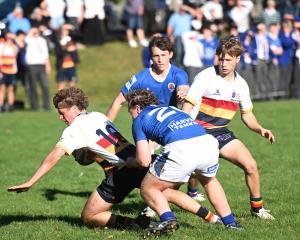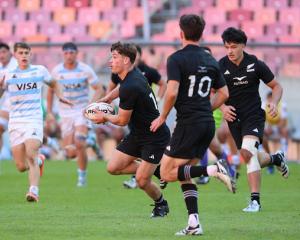
He's convinced the new crouch-bind-set instructions will benefit the sport, but warns those changes may still take time.
The statistics aren't flattering but Cron, who is on an IRB laws group, liaises regularly with men like Andrew Blades and Pieter de Villiers, who guide the Wallaby and Springbok scrums.
"The changes were made for player welfare - and that has worked - and for viewers, and that box has not been fully ticked," Cron said.
The All Blacks fed 12 scrums in the latest test with the Boks. Three were resets, four were heeled by New Zealand, who were also awarded two penalties and a freekick by referee Romaine Pointe, while the Boks earned a freekick and a penalty.
The Springboks had six scrums with no resets, hooked the ball three times, lost one and received two penalties.
Cron felt a delay before the "yes nine" put-in command from the referee, a narrow channel for that delivery, the pressure and incorrect binding from tighthead props were all part of the scrum difficulties.
The reduction in the hit helped stability and player welfare, and most collapses were caused by tightheads' incorrect binding.
"Clearly the cause is tightheads binding on the arm and I don't think [the All Blacks] did that in the test," he said.
"The law states the tighthead must bind onto the body. You're not allowed to bind onto the arm, elbow, shoulder, chest or collar. After the hit, the props are allowed to readjust but it must be within the law.
"The next thing is the way we scrum now, with the depth and pushing position, it's impossible for the hooker to get his foot up and into the tunnel. It's like the lineout, we have to work through this with the right authorities."
That meant giving constant feedback to Joel Jutge, who was in charge of an IRB group overseeing the scrum alterations.
Scrums had become a pushing competition and the Pumas were trying to cope with that by slowly rolling the ball in, but that can lead to poor quality ball. The All Blacks were looking for strong possession to attack from.
When front rows were bound, halfbacks were supposed to feed the ball straight, into an area one ball width either side of the props' shoulders, he said.
"For a hooker to get that ball back, he has to strike past the middle line but the force in the scrum doesn't allow that. We're proposing that the tunnel should be widened. We want the ball fed in straight but in a wider channel."
When Cron played, hookers swung off the props but the pressure in scrums was far less. Teams were hitting, holding and pushing in a much longer test of power and technique.
Scrums were no worse than before but there was no silver bullet either because they relied on players with good technique and strength.
"Referees need to look at one thing and make sure both tightheads bind on the body and that will stop a lot of the collapses.
"Generally I get my guys to bind just under the armpit so they're off the arm and on the body, and if they stay there they have a strong legal position.
"The new laws should take away 50 per cent of the problems; they should stand out and officials should be able to find fault easily."
- Wynne Gray of the NZ Herald













